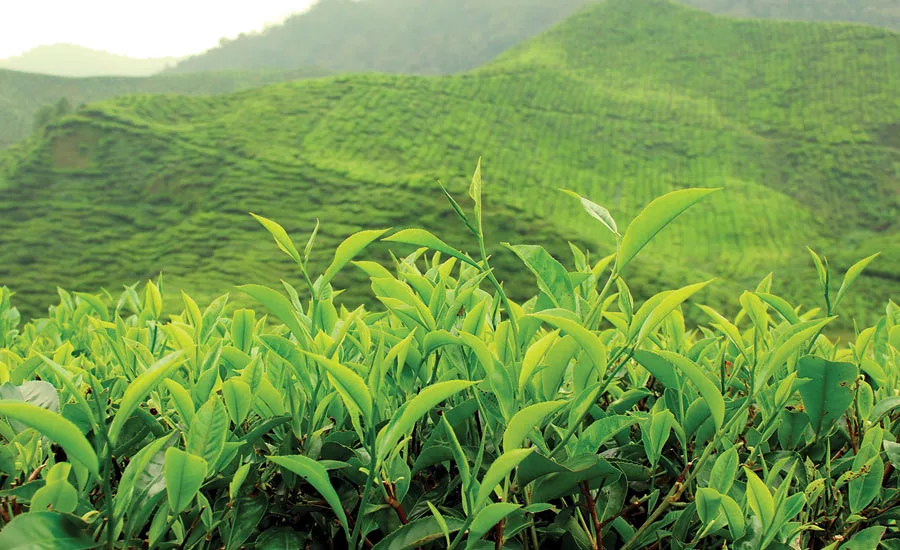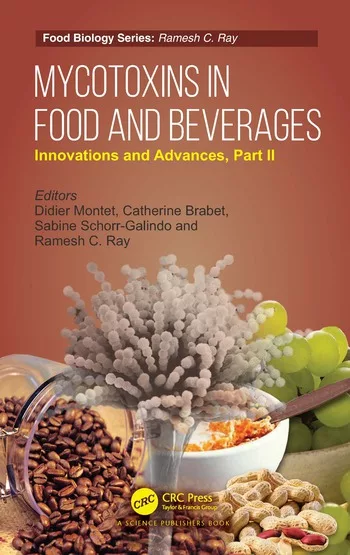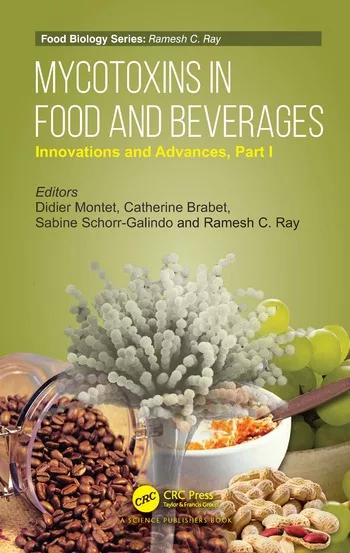Tea’s mass appeal resonates across beverages
Versatility allows tea usage in beverages, food, snacks

Hot or cold, bottled or bagged, tea is one of the most recognizable, widely consumed beverages in the world due to its healthy halo, premium options and flavor innovations.
On any given day, more than 158 million Americans are drinking tea, according to the New York-based Tea Association of the U.S.A. Inc. In 2016, ready-to-drink (RTD) tea made up 80 percent of the tea category, a 4 percent increase from 2015, according to the association. Category volume exceeded 1.7 billion gallons in 2016, it adds.
Transparency, clean-label trends and the popularity of plant-based beverages is contributing to the use of tea as an ingredient, particularly in the RTD category, experts note.
“Consumers today place more priority around transparency and products that are ‘clean,’ ‘natural’ and promote overall well-being. Consumers are more willing to pay a premium for products that they trust and believe in, which is evidenced by the growing premium RTD tea segment and increased focus by brands to reformulate products with limited but better ingredients,” says Heidi McCormack, marketing manager for Finlays Extracts & Ingredients USA Inc., Lincoln, R.I. “Tea offers a multitude of benefits in a natural, plant-based, healthy format and can be added to beverages for leveraging a variety of different values and functions.”
The macro health-and-wellness trend also is influencing the popularity of tea. “Given that tea is a known ingredient with proven health benefits, it is a go-to ingredient for many beverage manufacturers who are looking for healthier alternatives compared to beverages with artificial ingredients,” says Sarah Rubio, sales manager of extracts for Martin Bauer Inc., Secaucus, N.J. “Tea can add natural color, flavor and caffeine, as well as astringency, mouthfeel and antioxidants. It is also proven to have many other health benefits.”
Martin Bauer’s Leaf Tea Sales Manager Anyeli Beard highlights the benefits realized within tea thanks to increased scientific research focusing on tea’s healthy attributes. “Some of the data shows that tea can help with weight loss and even reduce the risk of some cancers,” she says. “In addition to these health benefits, tea has a low caffeine content in comparison to coffee, which helps support the growing demand of healthier drink options.”
Regardless of the varietal, Randal Kreienbrink, vice president of marketing for BI Nutraceutials, Ranch Dominguez, Calif., says that the popularity of plant-based beverages has helped to influence RTD teas and brewed teas. “Energy, calming and generally ‘good for you’ teas are leading the pack,” he says. “Energy tea blends are strong. For instance, a guarana tea ingredient would be used for energy, a green tea ingredient used for health and antioxidants, [and] valerian used for sleep.”
Clean-label and reduced-sugar trends also are bolstering the creation of RTD teas in the market, notes Angela Lantman, applications manager at Synergy Flavors, Wauconda, Ill. “When manufacturers create RTD teas, they can create products that are preservative-free with no color added,” she says. “Tea is acceptable as an unsweetened or lightly sweetened beverage. Additionally, there is a ‘health halo,’ surrounding tea in the beverage marketplace because of the antioxidants and other healthy ingredients it contains.
“Because consumers perceive tea as healthy and also like its taste, the likelihood of it being used as an ingredient by manufacturers increases,” she continues.
Theresa Lancaster, insights manager at McCormick Flavor Solutions, Hunt Valley, Md., echoes similar sentiments. “Tea is no longer just a warm cup of comfort or refreshing iced beverage; it is becoming a key ingredient in many beverage and food applications, especially due to its natural and functional association,” she says.
Victoria Ward, senior marketing manager at Philadelphia-based Tastepoint by IFF, notes that the market is ripe for tea ingredients in various formats, including some unexpected ones.
“It’s not uncommon for a popular product to lend itself to other formats when driven by consumer demand. This is especially true of tea, which is highly adaptable across sectors,” Ward explains. “Tea also has a reputation for playing very well with other ingredients and formats, making it a top choice for hybrid products and adventurous flavor combinations.”
McCormick’s Lancaster notes how tea’s adaptability allows it fulfill consumer need states throughout the year.
“Tea is a versatile platform that can be used across numerous occasions and seasons due to hot and cold preparations,” she says. “Craft tea, including tea cocktails and mocktails, meet the need for more premium or indulgent occasions. Also, the desire for global flavor experimentation has resulted in a large variety of tea profiles now appearing in packaged beverage launches as well as [on] menu offerings, including smoked black tea, matcha, white tea, chai, fruit-infused tea, hibiscus tea and more.”
Flavorful options
Based on consumption, black tea still is the most popular tea variety, with about 80 percent of the 84 billion servings of tea consumed in 2016; green tea followed with 16 percent; and oolong, white and dark tea round out the Top 5, according to the Tea Association.
“In 2016, total U.S. black and green tea imports were approximately 288 million pounds, with an estimated wholesale value of approximately $12 billion,” the association reports.
Although black tea remains the most popular varietal in the market, green tea is on the upswing, says Synergy Flavors’ Jodi Horon, business development manager for beverage.
“Black tea remains the most popular choice for RTD teas, but green tea beverages are also on the rise. Additionally, matcha tea is gaining popularity as an ingredient in the RTD category, as well as in other beverage categories, such as dairy and latte drinks,” Horon says.
Pam Everett, director of category management for tea at Concord, N.C.-based S&D Coffee & Tea, also highlights the popularity of green tea as well as other varietals, especially among millennials. “Rooibos, yerba mate and kombucha are trending in the tea/herbal space of the market,” she adds.
Lightly sweetened tropical flavors including lemon grass and ginger and higher levels of antioxidants derived from dark berries or the tea itself are among the trends seen by Johns Creek, Ga.-based Amelia Bay’s John Harper Crandall, vice president of sales.
Kombucha beverages also are seeing rapid growth in the fermented beverage category, he says.
“There is no denying the growing popularity of kombucha — sales are estimated to grow from $0.6 billion in 2015 to $1.8 billion in 2020, at a [compound annual growth rate] (CAGR) of 25 percent, according to MarketsandMarkets.com,” Harper Crandall explains. “The commercial demand for kombucha parallels the growing consumer preference for better-for-you functional beverages with perceived health benefits.”
As the lines between beverage categories blur, tea ingredients are being used in multiple categories such as carbonated soft drinks, juice-tea blends, dairy (tea lattes), malt-based beverages and high-proof alcohol, notes Synergy Flavors’ Lantman.
“The blurring of beverage categories is a prevalent occurrence in the market; therefore, the beverage industry does not have strict boundaries on the ingredients a product can contain,” she says. “… Tea lattes have been on menus in coffee and tea shops for a long time and are now starting to find their ways into the RTD space, adding variety to a saturated coffee market.”
Donna Mascaro, project leader at Tastepoint by IFF, notes tea’s versatility across food and beverage categories. “The popularity and functionality of tea allows it to be utilized in a wide variety of products as an ingredient, such as cooking with it in meats and sauces. It has also been used in a variety of desserts like ice cream, cookies and dessert beverages,” she says. “Teas components are also being used in smoothies, drinkable soup, juice, coffee, soda and as an ‘added benefit’ in spirits.”
Formulations that work
When choosing tea ingredients and formats, beverage-makers should pay attention to the desired flavor profiles, on-pack label claims, price and solubility, experts note.
“The format and claims on the finished product are the major guiding principles in using tea ingredients,” says Ross McDonald, Finlay’s key account manager for leaf tea in North America. “Tea ingredients can range from tea leaves to spray-dried powders and liquid concentrates. Each type of ingredient will lend different opportunities to the customer in creating their product for market.
“… Generally, in the traditional market space, manufacturers are looking for black tea that has a deep red color and high clarity through the bottle,” he continues. “Some manufacturers are looking to break new ground with different product appearances and using green and oolong teas with less familiar aesthetics whilst putting more emphasis on the inherent flavor of the tea and the excitement that it brings to the brand.”
Finlay’s Technical Director of Tea Lauren Lamoureaux notes that the challenges of formulating with tea ingredients will vary depending on which format is chosen.
“If leaves are chosen, then the customer will need to take into account the seasonality and origin of the product in order to maximize their consistency,” she explains. “If essences or other liquid teas are to be used, then the storage and transport of the ingredients may present challenges. A challenge that needs to be overcome in the industry is the compliance of the tea in regards to the market’s acceptable [maximum residue limits] (MRLs) for pesticides.”
BI Nutraceuticals’ Kreienbrink adds: “Bitter and off-flavor notes can cause challenges. It’s important to choose flavor ingredients that can naturally flavor a tea so it does not come off as being bitter or too strong.”’
Because tea is a natural ingredient grown around the world, weather, pesticides, land availability and sustainability are key factors for beverage-makers to consider when working with tea, says Martin Bauer’s Rubio.
Depending on field availability, lead time for specific teas like organic and Rain Forest Alliance could have extended delivery times, she cautions.
“All tea comes from the plant camellia sinensis; however, no two teas taste the same,” Rubio says. “Anything from the soil to the cutting, drying, rolling, etc., can affect the different varietals in terms of color, flavor profile and astringency, which all affect the final beverage.”
Given the taste, functionality, versatility and health benefits of tea, experts expect the ingredient will continue to be used in a wide array of products.
For example, certain tea extracts can be used as a natural replacement for caramel colors, Rubio says.
McCormick’s Lancaster also notes the versatility of tea leaves. “Tea leaves are a versatile pantry item because they not only deliver great tasting, wholesome drinks, but can also be used as a spice rub (crushed tea leaves), marinade and cooking liquid (instead of broth),” she explains. “Brewed tea can expand its domain as an ingredient for soups, desserts, cocktails and more.”
With a 90 percent market share, RTD tea, flavorful tea blends and easy-to-use tea bags most likely will continue to dominate the market and drive up tea consumption, says Martin Bauer’s Beard. Loose-leaf tea also is gaining ground.
“As [Beverage Marketing Corporation] (BMC’s) Gary Hemphill highlighted in his latest report ‘The Shifting U.S. Beverage Landscape and the Role of Tea,’ loose-leaf tea has increased by 4 percent by volume in 2017-2016 from 2015-2014,” Beard says. “A separate study shows that RTD teas continue a steady growth with premium and specialty types gaining 2.10 percent and 0.10 percent, respectively, of the market share by price segment. I believe this category will continue to grow in the market as consumers are willing to pay a higher price tag for higher quality tea beverages.
“From the remaining 10 percent of the market share, I would expect a growth in tea usage in carbonated soft drinks and beers, specifically in the craft beers sector,” she continues. “… Based on the Brewers Association, the craft beer sector had a 6.2 percent sales volume growth in 2016. This growth could serve as a platform for further research and innovation with teas and botanicals as ingredients. As the tea buzz continues, new products will be developed, and we will start to see tea being used in other industries.” BI
Looking for a reprint of this article?
From high-res PDFs to custom plaques, order your copy today!






